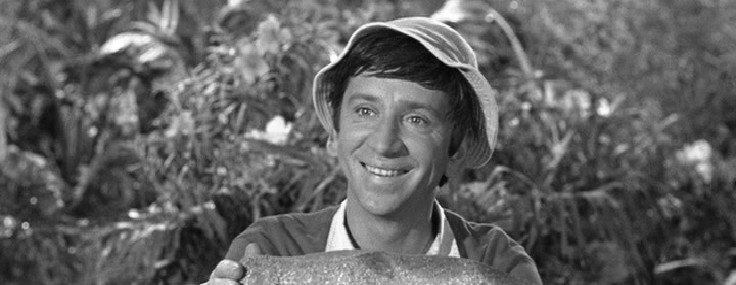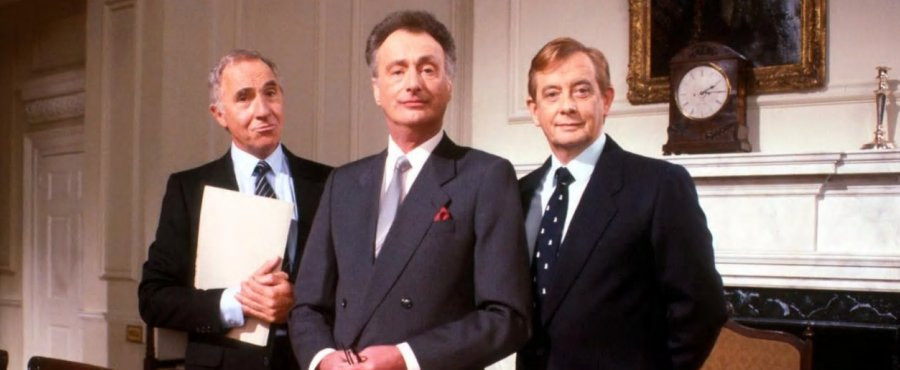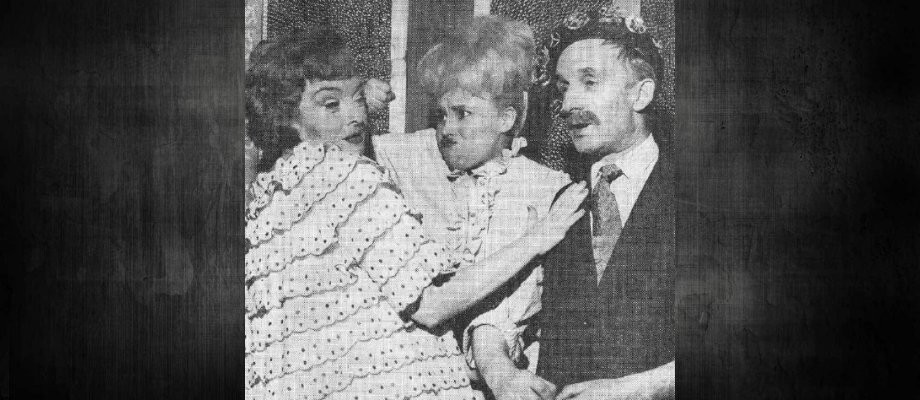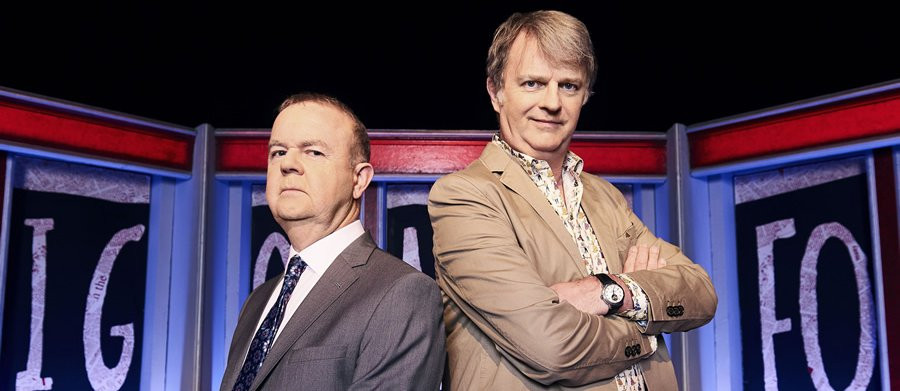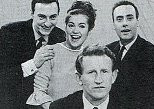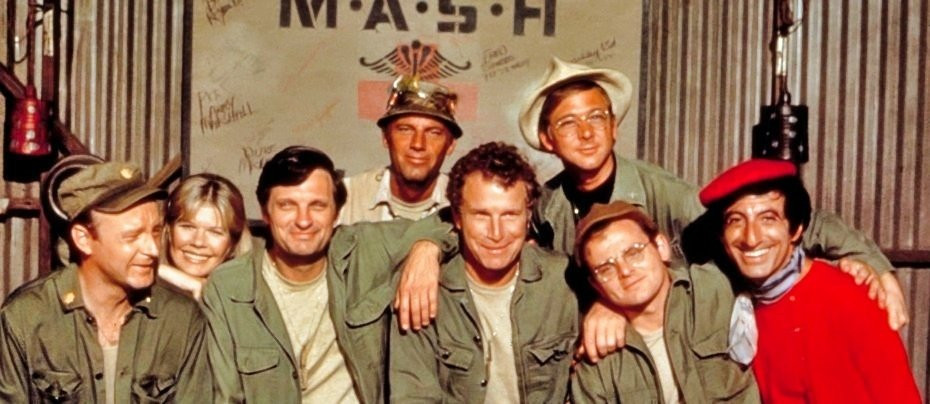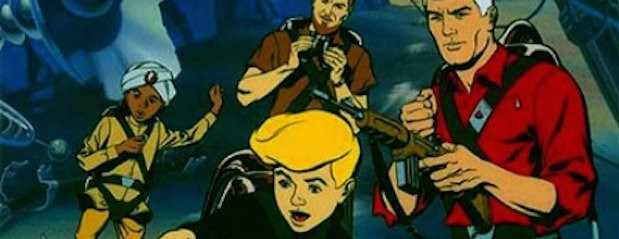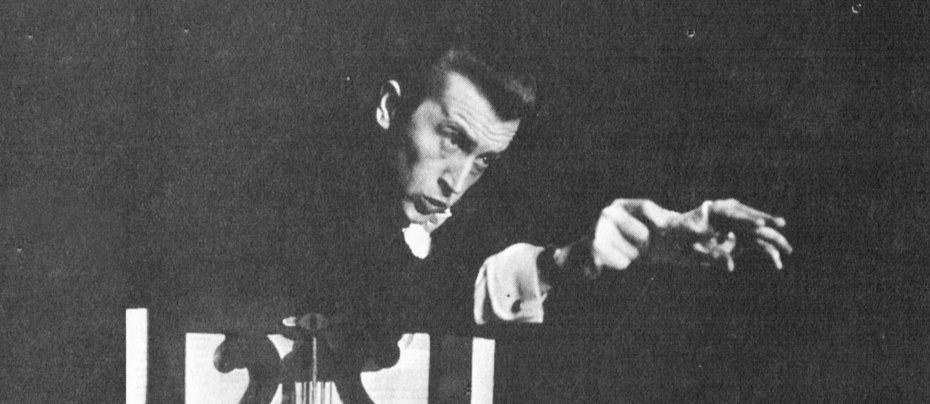
That Was The Week That Was (USA)
1964 - United StatesThe success of BBC’s satirical current events programme That Was The Week That Was didn’t go unnoticed by American television executives, who normally shied away from satire and making fun of public figures--Bob Hope’s good-natured barbs at contemporary presidents notwithstanding. But the mood in the U.S. (thanks in part to the humour of President John F. Kennedy) was changing in the early 1960's, and the idea of poking fun at the nation’s leaders was more acceptable. The time was right for something different, and NBC decided to see if an American version of “TW3" could work. While it lasted for only one and a half seasons, it proved to be influential enough to plant a seed for more satire in prime time.
On November 10th, 1963, NBC aired a one-hour “TW3" special, hosted by Henry Fonda and television and radio comic Henry Morgan. With a talented supporting cast (including the up-and-coming comedy team of Mike Nichols and Elaine May), the US version poked fun at its political leaders (including Kennedy; Republican Senator Barry Goldwater and former Vice-President Richard Nixon). Critics liked the special and it did well in the ratings, indicating that people were more willing to laugh at current events. NBC quickly decided to produce a weekly version of “TW3" and scheduled the first episode for January 10th, 1964.
But things had changed by that time: The nation (and the world) was still mourning the assassination of President Kennedy. His vice-president Lyndon Johnson was now in the Oval Office; and America was gearing up for a likely presidential election between Johnson and Goldwater.

A benefit of the BBC’s decision to cancel the British “TW3" (because of the national elections in that country during 1964) was it allowed that show’s host, David Frost, to join the American version as part of the ensemble cast. Originally, Elliott Reid hosted but Frost took over the job in the fall of 1964 and stayed as host until the end of the American version’s run. Morgan was still on hand, as was comic Buck Henry, actor Tom Bosley (years before Happy Days”) and a pre-M*A*S*H Alan Alda. Feminist Gloria Steinem was a “contributor” to the US version, along with satirist Tom Lehrer, whose gift was writing and singing songs on major issues of the day–nuclear war, pesticide use, sex and so forth. Nancy Ames was the “TW3 Girl,” singing the opening theme song that changed every week as she warbled about news headlines of the past seven days, just as Millicent Martin did in the British version.
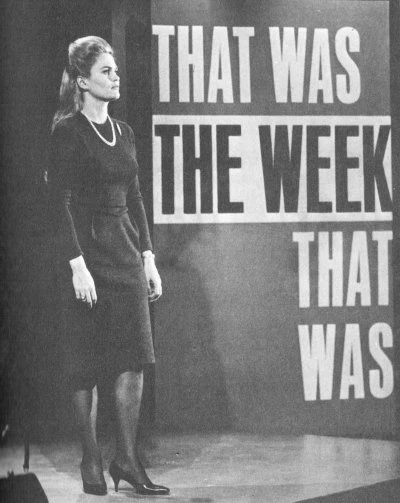
And in the first several months, the show had high moments: Alda and comic Sandy Baron portrayed a pair of warbling segregationist plumbers during a time of civil rights strife; and puppeteer Burr Tillstrom of Kukla and Ollie fame staged a hand puppet skit atop the Berlin Wall that won an Emmy award. Even “TW3's” jabs at television itself were effective. In one episode, a real-life ketchup commercial aired, with hamburger buns flipping their tops when they learned the brand of ketchup that would be used. When the show returned, David Frost began addressing the audience–and dozens of hamburger bun tops fell on top of him! The problem with the show, in contrast to its British counterpart, was its inability to make the satire - with any true conviction - the main focus, and as a result it wavered somewhere between biting and sophisticated parody and broad, main-stream comedy.
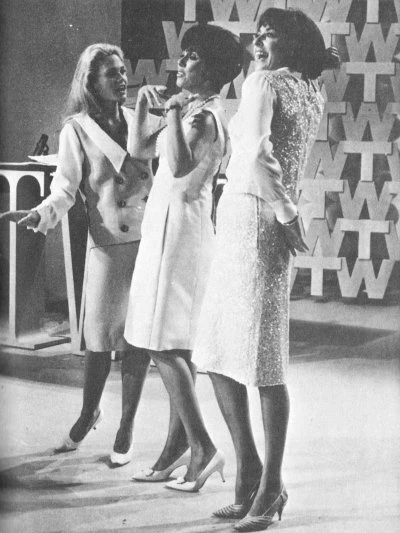
“TW3” aired on Friday nights and despite never developing a large audience devoted to either brand of humour, did well enough in the ratings for NBC to renew the show for the fall–even though it was an election year in the States. While the show made fun of President Lyndon Johnson and his vice-presidential choice Hubert Humphrey, it also took aim at Republican challenger Barry Goldwater and his conservative positions (one episode showed a puppet reading Goldwater’s public statements). Ironically, the presidential elections would spell the end of the American “TW3"–in its own way.
For the fall season, “TW3" was moved from its Friday slot to Tuesday nights at 9:30 PM–against the top-ten CBS rural comedy Petticoat Junction and ABC’s new serial drama Peyton Place. What’s more, Barry Goldwater found a way to get back at the show and its continued jabs at him. According to the authors of the book “Watching Television,” the September 22nd, 1964 season premiere was pre-empted by a 30 minute special paid for by the Goldwater campaign, delaying the show one week. But “TW3" was pre-empted three out of four times during October when the Republicans (and Goldwater) bought the Tuesday at 9:30 slots on NBC. November 3rd was Election Day, so all three networks pre-empted their schedules (including “TW3") to cover the results. On that day, Americans elected Johnson over Goldwater in a landslide.
“TW3" finally returned to the airwaves November 10th. It opened with a film of Goldwater’s concession speech and an announcer telling viewers “Due to circumstances beyond control, the regularly scheduled political broadcast scheduled for this time is pre-empted.” “TW3" won the battle against Barry, but lost the war. Peyton Place and Petticoat Junction swamped NBC in the ratings. As a result, the American “TW3" aired its last episode May 4th, 1965. (An album of Tom Lehrer songs performed on “TW3" became a big hit when it was released that fall.)
Despite its relatively short life in America, That Was The Week That Was and its willingness to take aim at current events paved the way for other more successful shows, including The Smothers Brothers Comedy Hour, Rowan & Martin’s Laugh-In, Saturday Night Live” SCTV, In Living Color, Mad TV. and later successful satirical news shows such as The Colbert Report (2005-2014) and The Daily Show (1996 – present)–owed a debt of thanks to the folks at “TW3".
Seen this show? How do you rate it?
Seen this show? How do you rate it?
Published on November 28th, 2021. Written by Michael Spadoni (2007) for Television Heaven.


